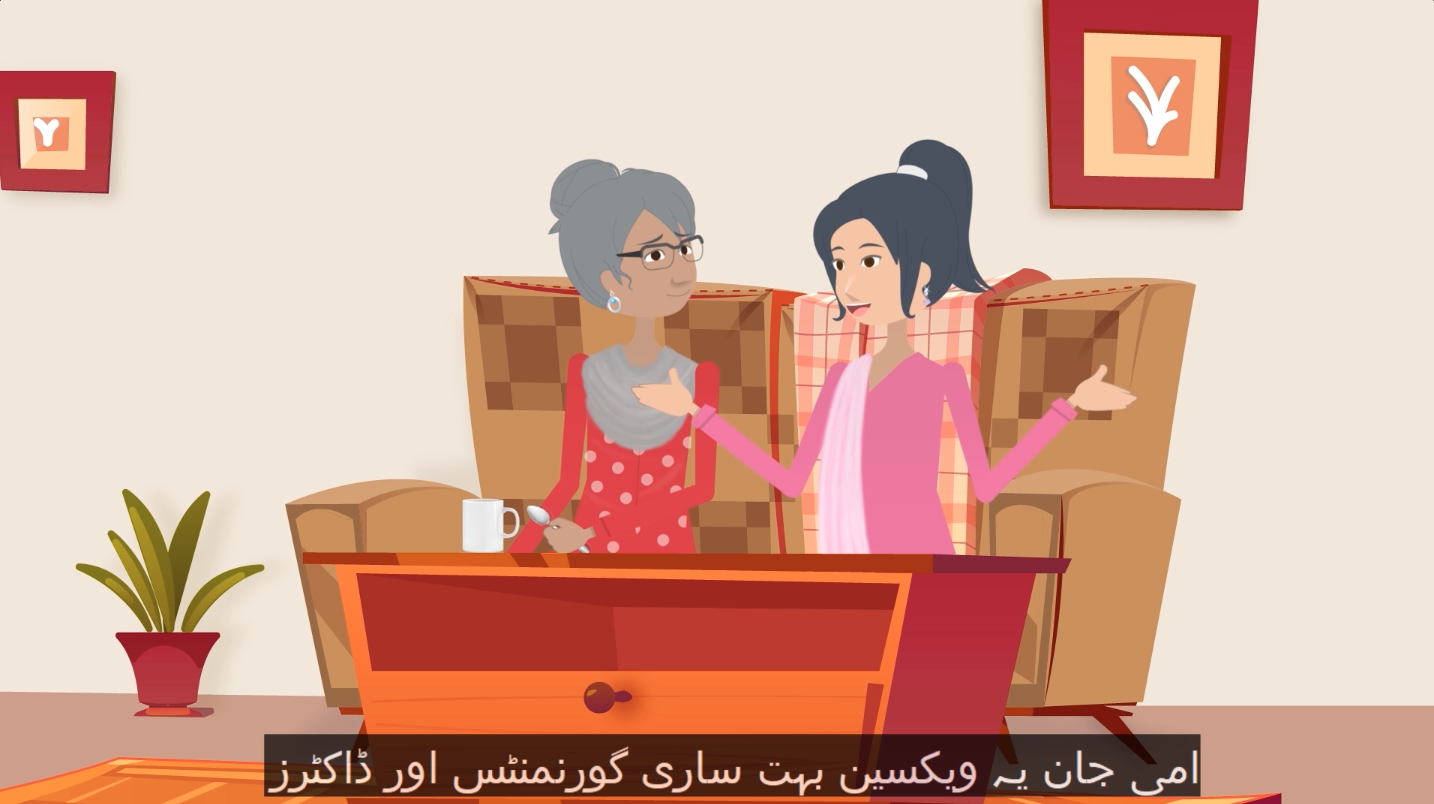In mid-2020, as the novel coronavirus spread across Pakistan, some communities, mostly in dense urban centers, received news and ongoing updates nearly immediately via electronic, print, and social media. Others, mostly in rural communities, received information slowly, less clearly, and too often, secondhand.
As information rapidly changed, the inequitable flow of information meant COVID-19 updates were not always formal or factual. Local government leaders quickly ascertained that, in a country as large and as geographically and culturally diverse as Pakistan, it is critical to develop a clear, concise, and intentional communications strategy.
Advocacy, communication, and social mobilization (ACSM) is a set of nuanced activities that work to increase awareness of and communicate about an issue, while also motivating individuals and communities to act. In early 2020, the government of Pakistan developed an ACSM strategy to keep its millions of citizens spread across 800,000 square kilometers informed about COVID-19 lockdowns and restrictions, disseminating information in more than 70 languages.

Information, education, and communication materials—like the PATH-supported graphics above—provide clear information through simple messages and images, and are a key component of vaccine information campaigns. Images: PATH.
Informing millions takes a team
The Ministry of National Health Services, Regulation, and Coordination established and led the Risk Communications and Community Engagement (RCCE) Task Force. This group became a central coordination mechanism for the many partners implementing the ACSM strategy. Government, bi- and multilateral partners, nongovernmental organizations, and civil society organizations all worked together to strategize, identify needs, fill gaps, and pivot as the COVID-19 pandemic continued.
In August 2021 PHC Global, a local health research organization, partnered with PATH to help the RCCE Task Force share accurate and timely COVID-19 vaccine information with eligible populations who were less likely to receive updated information from traditional media channels.
First, the Task Force needed to get the right messages to the right messengers. “Together, we focused on message development and ensured that the most current messages were disseminated to provincial leaders,” says Farzana Muhib, senior program officer for PATH’s Center for Vaccine Innovation and Access. “Given the nature of Pakistan’s decentralized health system, our partners at PHC Global connected with provincial leaders and health officers directly to ensure the information they received was factual, and when possible, translated into the local language.”
As vaccine rollout moved beyond frontline health workers in late 2021, key population cohorts were not being reached at the ideal coverage rates, particularly pregnant and lactating women, lower-literacy populations, and industrial and office workers. The challenge of accessing the vaccine varied between the population cohorts. PHC Global developed short, catchy videos rooted in local culture and translated into four languages to address some of the myths and rumors relevant to each population cohort (click here to watch one of PHC Global's videos on Facebook).

A still image from one of the PHC Global-developed animated videos designed to address myths and rumors surrounding COVID-19 vaccination. Photo: PHC Global.
When context changes, so does communication
As COVID-19 vaccine coverage increased, so did the need for communications designed with specific communities and people in mind. Once early demand waned, communication activities had to reach the populations that continued to show low coverage or demand. One of those groups was 12-to-17-year-olds, who, according to February 2022 coverage data, were not completing their second and/or third vaccine doses.
“Recognizing the influence and reach of social media ... among this age group, we worked with the RCCE Task Force partners to initiate a TikTok campaign about COVID-19 vaccines,” shared Safeena Ahmed, communications manager at PHC Global. “By sharing short videos via TikTok, we had unprecedented access to reach these children directly.” The Ministry of National Health Services, Regulation, and Coordination and PHC Global identified ten TikTok influencers with large followings and partnered with them to share messages about the importance of being fully vaccinated against COVID-19.
The TikTok videos were shared for several days and coordinated with a unifying hashtag (#sehatkoboostdo) to continue the momentum. During the campaign more than 1.2 million people viewed the videos, and more than 12,000 engaged with the videos via a comment or share.
Watch some of the TikTok videos promoting COVID-19 vaccine booster doses:
ACSM is never finished
COVID-19 continues to impact people’s lives in Pakistan, as well as globally. Even as other news and health crises arise, the need to disseminate clear, accurate, and factual information about the pandemic does not diminish. Instead, the messages and information must adapt to the new context. As Pakistan confronts new health challenges and implements more vaccine campaigns, consistent and clear information remains crucial to ensuring that people remain informed and can take appropriate COVID-19 precautions.
“Messages change, and the actions that people need to take for their health evolve,” says Safeena Ahmed. “But behind those actions and the health of a country of 220 million people is an ACSM strategy that works to reach people with the information they need, when, how, and where they can access it.”



